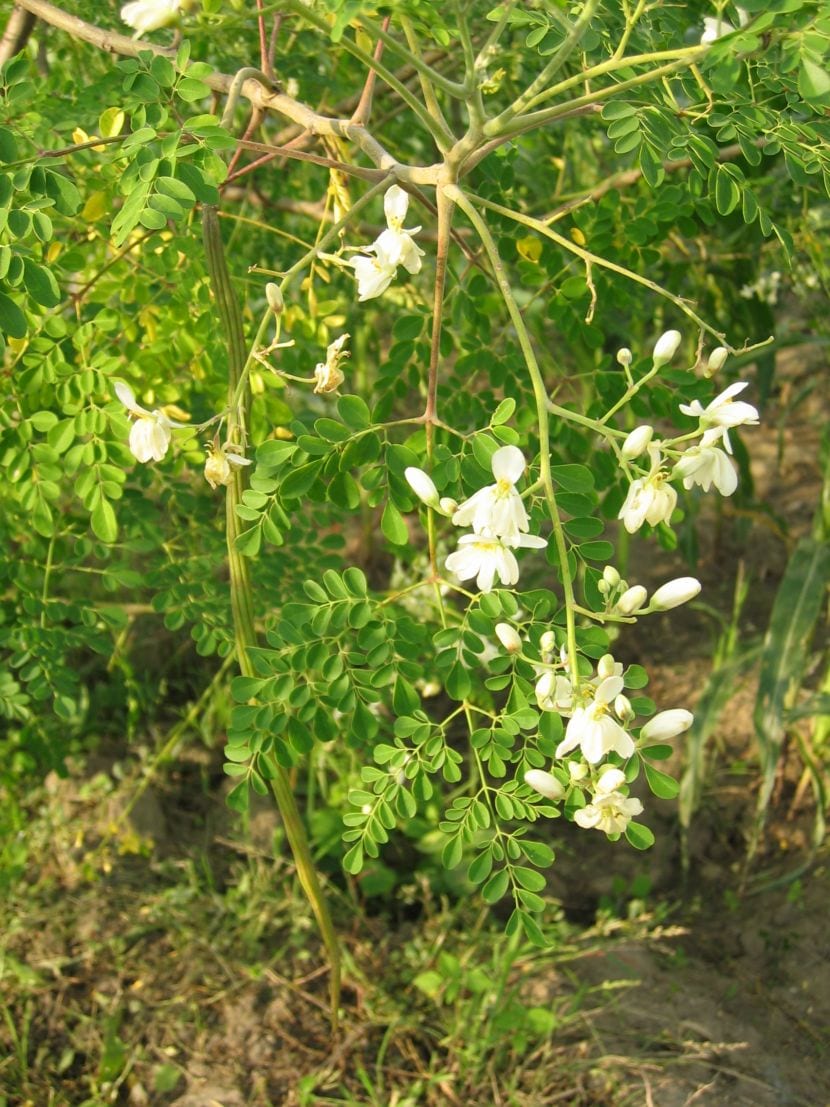
La Moringa oleifera it is an extraordinary tree. Native to northern India, it can be found anywhere with a warm climate. Its rapid growth up to ten meters in height and its adaptability to any type of soil, in addition to its numerous properties and uses that we will see next, make it a tree that should not be missing in your garden.
If what you are looking for is a practical tree, Moringa is undoubtedly a good option.

Because of his resistance to drought and rapid growth (If the climatic conditions accompany it, it can grow one meter per year) it is very common for those people who live in dry climates to have several copies of this species. As… Everything is used! Leaves, roots, ... and seeds.
But before moving on to the properties, let's talk a little about its cultivation, which is relatively simple.

If we can, it is best to take the fruits directly from the tree. But if not, we can buy them in specialized stores. Once we have the seeds at home, the first thing to do is clean them well with water, and leave them in a glass with this precious liquid for about 24 hours or so. The next day, they must all have sunk; those that have not done so, we will discard or sow in a separate seedbed.
Now is the time to transfer them to a flowerpot or forest tray. If we opt for the tray, we will put one or two seeds in each alveolus. Next, we will place the seedbeds in full sun, always maintaining a certain humidity in the substrate, which must be composed of black peat with perlite for example, or be specific for seedbeds. Drainage is important, and prevent the water from being puddled, since Moringa fears waterlogging. The roots could rot, and be a serious problem for the plant.

Our little plants will grow very quickly if the weather is good, and we will most likely have to transplant them a few months after germinating. We will proceed as follows:
- We will carefully remove the seedlings from the pot, taking care so that the root ball does not break.
- Later, we will separate the seedlings little by little, trying not to break too many roots.
- Next, we will each plant them in an individual pot.
- And finally we will water.
We will place the pots in full sun, to ensure that their growth and development is adequate, and thus avoid unnecessary risks.
To accelerate growth we can fertilize with a universal fertilizer following the manufacturer's recommendations, or use -more recommended- an ecological fertilizer.

And, now, we come to the properties, uses and some curiosity of this magnificent tree. We will start with:
Medicinal properties

-Estate:
Taken directly they are:
- Expectorants
- Tone the body
- Diuretics
And to relieve skin irritation, a juice is prepared that is applied directly to the affected area.
-Sheets:
Taken directly or as an infusion:
- Purgative
- Lower blood pressure
As a poultice, rubbing the temples with its leaves, relieves headaches and sores.
-Oil:
It is served externally to fight skin diseases, prevent mosquito bites, and the flower tea helps relieve and fight cold symptoms.
Uses

Moringa has numerous uses, both in traditional medicine that we have already seen and in gardening. In the latter field it is used above all in dry and warm gardens, either as an isolated specimen or in groups.
It tolerates pruning well, so growth can be controlled without problems.
Curiosity

In addition to living with very little water a year, did you know that its seeds have the power to purify water? Yes Yes. Scientists in Africa discovered it. They found that the dust obtained from the seeds can kill up to 90 percent of bacteria found in water. Incredible true? It is done in the following way: once you have the seeds, they are ground, the resulting powder is mixed with the water, and filtered with a cloth before using it.
What did you think of Moringa?
Hello, your blog is interesting, I plant Goya goya in pots I have already been with them for three years and the leaf has not flowered, it is very easy, this year in Mexico a lot of water has fallen and I think it does not favor it, what you need to start to bloom… .and
How can I take care of him, is he pruned? I don't get instructions ... about his care there is not much information and less in Spanish, could you help me?
Hey.
You mean goji (Lycium barbarum)? It is because by that name "Goya berries" I do not know any plants.
If so, in this article it explains how it is cared for.
A greeting.